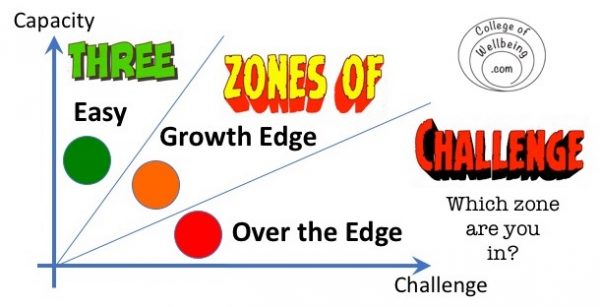An image I use in resilience training is of three zones of challenge – the green zone is for challenges you deal with easily. Included here are areas other people might find difficult but which, thanks to your experience, strengths and skill, you address in a masterful manner. As the challenge level rises, you move into the orange zone of feeling stretched. This is your growth edge, where though you might sweat, you rise to the challenge. While taxing, it can be a satisfying zone to work in, the steep learning curve cultivating both competence and confidence. Finally there are times you’re over the edge into the red zone of panic, overload or overwhelm. Here you feel out of depth, unsafe, perhaps also fearful or defeated. Are these zones familiar to you? Where do you spend most of your time?

Resilience training brings most benefit when you, or the people you work with, are in the orange or red zones. As the graph above shows, growing your coping capacity moves you upwards, transforming a red zone experience into orange, or orange into green.
When I find myself in the red zone, I ask myself “if I saw this as an opportunity to practice applying resilience tools, which ones might help me here?” That question shifts my mindset, helping me recognise my adversity as a growing edge, as a testing environment where I come to know more deeply what helps in difficult times.
When I work with teams struggling with heightened pressures or uncertainties, this colour code framework of ‘red, orange, green’ provides a language for naming where people find themselves. It also opens up a conversation about what makes a difference when outside our comfort zone of green.
So what’s the ideal? It is nice to dwell in the green zone, but permanent residence here brings risks of complacency or boredom. Ships are safe in harbours, but that’s not what ships are for.
So which zones have you been in today?
Here’s a short film to introduce this three zone framework.
For more on resilience training, see our free webinar and seven module online course.
April 20th – Resilience Practitioner Training Free webinar – what helps in the red zone?
May 4th – Resilience Practitioner Training seven module online course starts